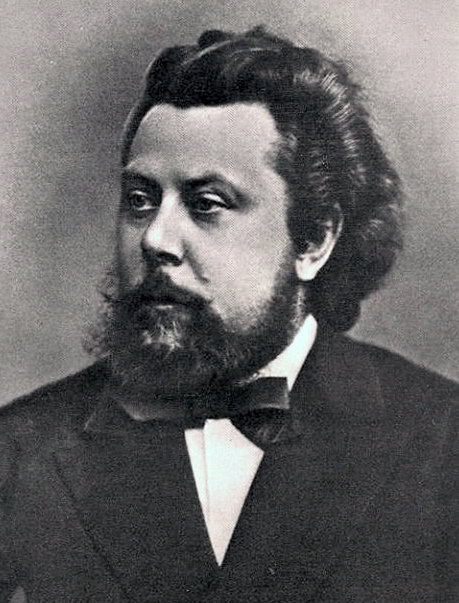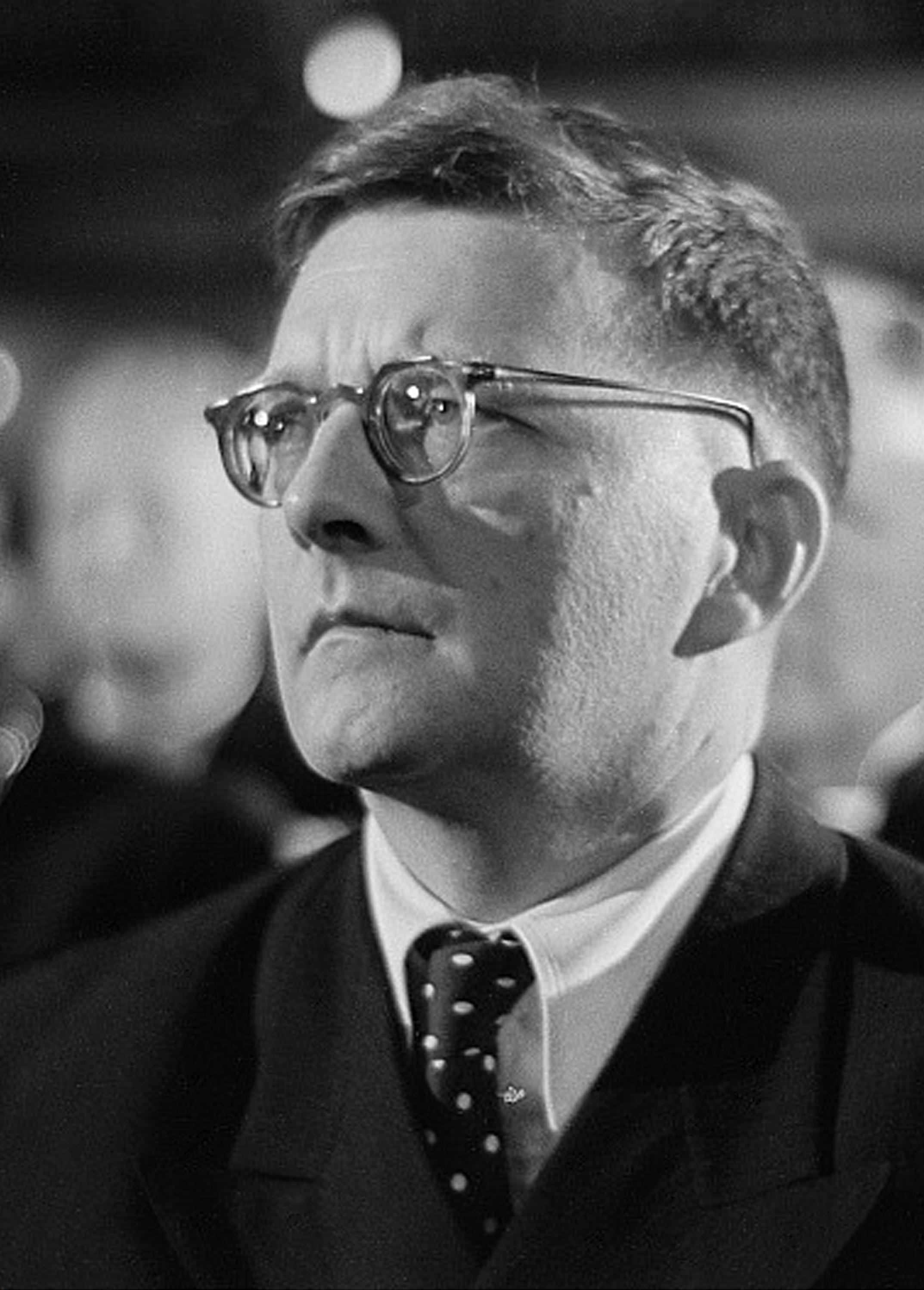|
Rayok (Mussorgsky)
A rayok ( rus, раёк, p=rɐˈjɵk, "small paradise") was a Russian fairground peep show. Performed using a box with pictures viewed through magnifying lenses, these were accompanied by lewd rhymed jokes. ''The Fall of Adam and Eve'' was one of the most popular topics. The term rayok has also come to be applied to rhymed humorous talk shows, without peeping, featuring a kind of rhymed prose. The expression "to talk rayok", говорить райком, thus means to speak in a rhymed, humorous way, to patter. Rayok, in both its peep show and talk show forms, has been an occupation of wandering artists called "rayoshniks". When used as the title for a piece of music, rayok implies a scurrilous entertainment, as in: *''Rayok'', an extended song by Modest Mussorgsky also known as ''Peep-Show'' *'' Anti-formalist Rayok'', a cantata by Dmitri Shostakovich also known as ''Little Paradise'', ''The Gods'' and ''A Learner's Manual'' See also *Petrushka *Vertep *Zograscope A zograsco ... [...More Info...] [...Related Items...] OR: [Wikipedia] [Google] [Baidu] |
Paradise
In religion, paradise is a place of exceptional happiness and delight. Paradisiacal notions are often laden with pastoral imagery, and may be cosmogonical or eschatological or both, often compared to the miseries of human civilization: in paradise there is only peace, prosperity, and happiness. Paradise is a place of contentment, a land of luxury and fulfillment. Paradise is often described as a "higher place", the holiest place, in contrast to this World (theology), world, or underworlds such as Hell. In eschatological contexts, paradise is imagined as an Entering heaven alive, abode of the virtuous dead. In Christianity and Islam, Heaven is a paradisiacal relief. In old Egyptian beliefs, the underworld is Aaru, the reed-fields of ideal hunting and fishing grounds where the dead lived after judgment. For the Celts, it was the Fortunate Isles, Fortunate Isle of Mag Mell. For the classical Greeks, the Elysium, Elysian fields was a paradisiacal land of plenty where the heroic and ri ... [...More Info...] [...Related Items...] OR: [Wikipedia] [Google] [Baidu] |
Raree Show
A raree show, peep show or peep box is an exhibition of pictures or objects (or a combination of both), viewed through a small hole or magnifying glass. In 17th and 18th century Europe, it was a popular form of entertainment provided by wandering showmen. History Peep shows, also known as peep box or raree show ("rarity show") can be traced back to the early modern period (15th century in Europe) and are known in various cultures. Around 1437 Italian humanist author, artist, architect, poet, priest, linguist, philosopher and cryptographer Leon Battista Alberti is thought to have created the earliest impressive peep show boxes with painted pictures to be viewed through a small hole. He had two kinds: night scenes with the moon and stars, and day scenes. It is thought these pictures may have been transparent and lit from behind, possibly changing from day to night by changing the lighting. It has also been suggested that it may have been a predecessor of the magic lantern that coul ... [...More Info...] [...Related Items...] OR: [Wikipedia] [Google] [Baidu] |
Rhymed Prose
Rhymed prose is a literary form and literary genre, written in unmetrical rhymes. This form has been known in many different cultures. In some cases the rhymed prose is a distinctive, well-defined style of writing. In modern literary traditions the boundaries of poetry are very broad (free verse, prose poetry, etc.), and some works may be described both as prose and poetry. Arabic culture and influences In classic Arabic literature the rhymed prose is called ''saj'''. An elaborate Arabic kind of rhymed prose is ''maqama''. It influenced other cultures of the Muslim world, such as Persian (as exemplified by Saadi's '' Gulestan'') and Turkish ( :tr:Seci). ''Maqama'' also influenced the medieval Hebrew literature, a significant amount of which was produced by Jews of the Muslim world. It influenced the style of Yehuda Alharizi, Ibn Zabara, Ibn Hasdai (Abraham ben Samuel ha-Levi ibn Hasdai), Ibn Sahula, Jacob ben Eleazer. The corresponding works were called ''maqamat'' or ''ma ... [...More Info...] [...Related Items...] OR: [Wikipedia] [Google] [Baidu] |
Patter
Patter is a prepared and practiced speech that is designed to produce a desired response from its audience. Examples of occupations with a patter might include the auctioneer, salesperson, dance caller, magician, or comedian. The term may have been a colloquial shortening of "Pater Noster", or the Lord's Prayer, and may have referred to the practice of mouthing or mumbling prayers quickly and mechanically. From this, it became a slang word for the secret and equally incomprehensible mutterings of a cant language used by beggars, thieves, fences, etc., and then the fluent plausible talk that a cheap-jack employs to pass off his goods. Many illusionists, e.g., card magicians, use patter both to enhance the show and to distract the attention of the spectators. It is thus also used of any rapid manner of talking, and of a patter-song, in which a very large number of words have to be sung at high speed to fit the music. A western square dance caller may interpolate patter—in th ... [...More Info...] [...Related Items...] OR: [Wikipedia] [Google] [Baidu] |
Rayok (Mussorgsky)
A rayok ( rus, раёк, p=rɐˈjɵk, "small paradise") was a Russian fairground peep show. Performed using a box with pictures viewed through magnifying lenses, these were accompanied by lewd rhymed jokes. ''The Fall of Adam and Eve'' was one of the most popular topics. The term rayok has also come to be applied to rhymed humorous talk shows, without peeping, featuring a kind of rhymed prose. The expression "to talk rayok", говорить райком, thus means to speak in a rhymed, humorous way, to patter. Rayok, in both its peep show and talk show forms, has been an occupation of wandering artists called "rayoshniks". When used as the title for a piece of music, rayok implies a scurrilous entertainment, as in: *''Rayok'', an extended song by Modest Mussorgsky also known as ''Peep-Show'' *'' Anti-formalist Rayok'', a cantata by Dmitri Shostakovich also known as ''Little Paradise'', ''The Gods'' and ''A Learner's Manual'' See also *Petrushka *Vertep *Zograscope A zograsco ... [...More Info...] [...Related Items...] OR: [Wikipedia] [Google] [Baidu] |
Modest Mussorgsky
Modest Petrovich Mussorgsky ( rus, link=no, Модест Петрович Мусоргский, Modest Petrovich Musorgsky , mɐˈdɛst pʲɪˈtrovʲɪtɕ ˈmusərkskʲɪj, Ru-Modest Petrovich Mussorgsky version.ogg; – ) was a Russian composer, one of the group known as " The Five". He was an innovator of Russian music in the Romantic period. He strove to achieve a uniquely Russian musical identity, often in deliberate defiance of the established conventions of Western music. Many of his works were inspired by Russian history, Russian folklore, and other national themes. Such works include the opera '' Boris Godunov'', the orchestral tone poem ''Night on Bald Mountain'' and the piano suite ''Pictures at an Exhibition''. For many years, Mussorgsky's works were mainly known in versions revised or completed by other composers. Many of his most important compositions have posthumously come into their own in their original forms, and some of the original scores are now also ava ... [...More Info...] [...Related Items...] OR: [Wikipedia] [Google] [Baidu] |
Anti-formalist Rayok
''Antiformalist Rayok'' (), also known as ''Learner's Manual'', without opus number, is a satirical cantata for four voices, chorus, and piano by Dmitri Shostakovich. It is subtitled ''As an aid to students: the struggle of the realistic and formalistic directions in music''. It satirizes the conferences that resulted from the Zhdanov decree of 1948 and the anti-formalism campaign in Soviet arts which followed it. The work includes quotations from Andrei Zdhanov's speech at the Conference of the Musicians at the Central Comitee of the all-Union Party in Moscow in January 1948. The libretto also incorporates Dmitri Shepilov's speech at the Second Congress of Composers in 1957, in which he mispronounces the name of the composer Nikolai Rimsky-Korsakov (''KorSAkov''). In regard to music, there are references to the traditional Georgian folk song "Suliko", Joseph Stalin's favourite song, and the popular Russian folk tunes “Kalinka” and “Kamarinskaya”. It also contains m ... [...More Info...] [...Related Items...] OR: [Wikipedia] [Google] [Baidu] |
Cantata
A cantata (; ; literally "sung", past participle feminine singular of the Italian verb ''cantare'', "to sing") is a vocal composition with an instrumental accompaniment, typically in several movements, often involving a choir. The meaning of the term changed over time, from the simple single-voice madrigal of the early 17th century, to the multi-voice "cantata da camera" and the "cantata da chiesa" of the later part of that century, from the more substantial dramatic forms of the 18th century to the usually sacred-texted 19th-century cantata, which was effectively a type of short oratorio. Cantatas for use in the liturgy of church services are called church cantata or sacred cantata; other cantatas can be indicated as secular cantatas. Several cantatas were, and still are, written for special occasions, such as Christmas cantatas. Christoph Graupner, Georg Philipp Telemann and Johann Sebastian Bach composed cycles of church cantatas for the occasions of the liturgical year. ... [...More Info...] [...Related Items...] OR: [Wikipedia] [Google] [Baidu] |
Dmitri Shostakovich
Dmitri Dmitriyevich Shostakovich, , group=n (9 August 1975) was a Soviet-era Russian composer and pianist who became internationally known after the premiere of his Symphony No. 1 (Shostakovich), First Symphony in 1926 and was regarded throughout his life as a major composer. Shostakovich achieved early fame in the Soviet Union, but had a complex relationship with its government. His 1934 opera ''Lady Macbeth of Mtsensk (opera), Lady Macbeth of Mtsensk'' was initially a success, but eventually was Muddle Instead of Music, condemned by the Soviet government, putting his career at risk. In 1948 his work was #Second denunciation, denounced under the Zhdanov Doctrine, with professional consequences lasting several years. Even after his censure was On the Cult of Personality and Its Consequences, rescinded in 1956, performances of his music were occasionally subject to state interventions, as with his Symphony No. 13 (Shostakovich), Thirteenth Symphony (1962). Shostakovich was a m ... [...More Info...] [...Related Items...] OR: [Wikipedia] [Google] [Baidu] |
Petrushka
Petrushka ( rus, Петру́шка, p=pʲɪtˈruʂkə, a=Ru-петрушка.ogg) is a stock character of Russian folk puppetry. Italian puppeteers introduced it in the first third of the 19th century. While most core characters came from Italy, they were soon transformed by the addition of material from the Russian 'lubki' and 'intermedii.' Petrushkas are traditionally marionettes, as well as hand puppets. The character is a kind of a jester distinguished by his red dress, a red '' kolpak'', and often a long nose. Word origin Although the Russian word "petrushka" has a homonym meaning "parsley", in this context the word is actually a hypocoristic (diminutive) for "Pyotr" (Пётр), which is Peter in Russian. Despite this, the character has little or nothing in common with the ''commedia dell'arte'' stock characters of Petruccio or Pierrot, but is instead a Russian version of Punch or Pulcinella. History Pietro-Mira Pedrillo of Italy, the court jester of the Empress Anna Io ... [...More Info...] [...Related Items...] OR: [Wikipedia] [Google] [Baidu] |






